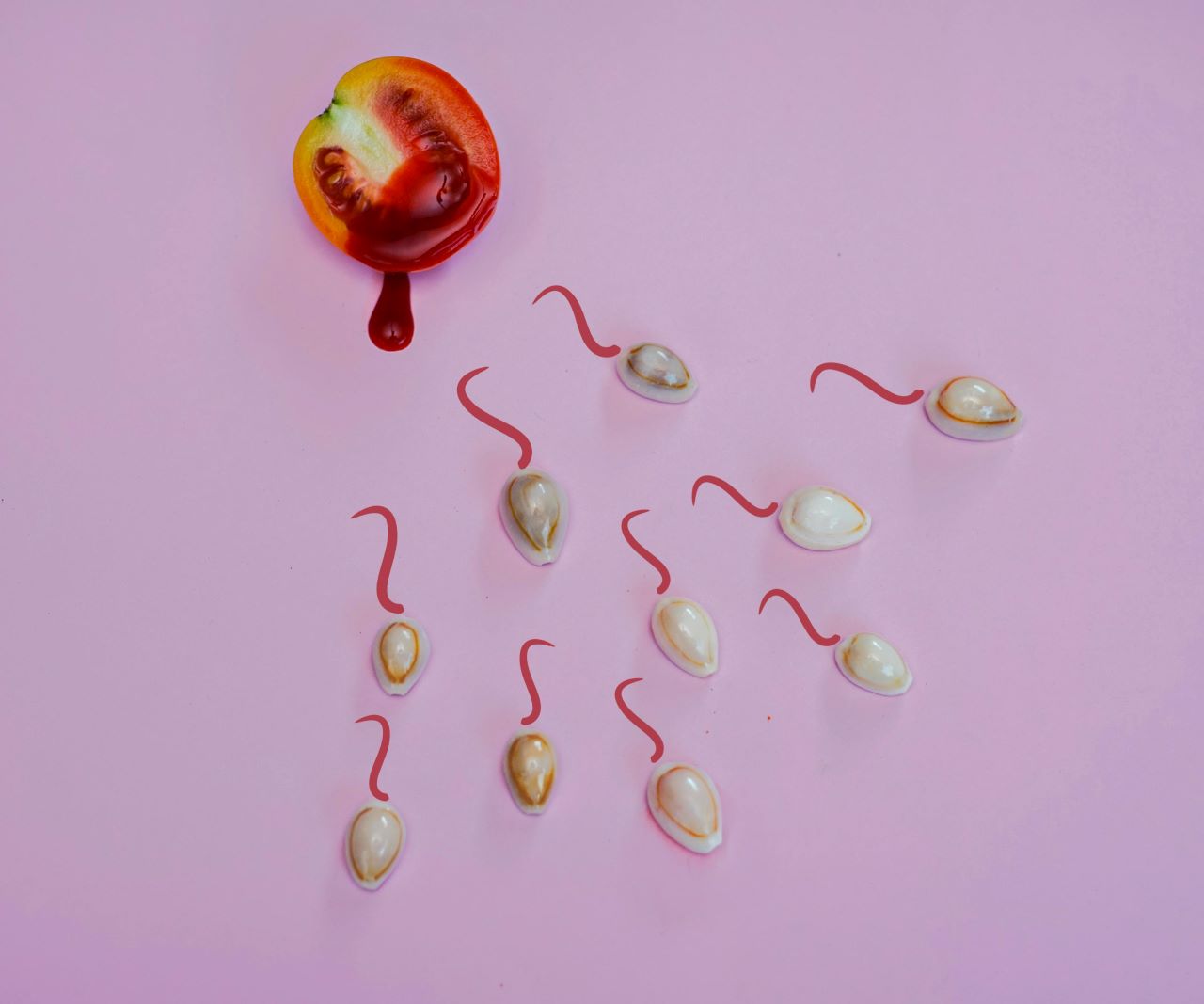Sperm do not all live the same length of time. Where they are, how they are handled, and whether sex happens close to ovulation decide how long they survive. This U.S.-focused guide sets out realistic timelines inside and outside the body, explains how heat and drying change survival, and shows the simple habits that protect motility and DNA integrity—aligned with standard lab methods and everyday clinic practice.
Sperm cells vs. semen: why the fluid matters
Sperm are the cells that carry genetic material. Semen is the protective fluid that briefly buffers acidity, supplies energy, and limits oxidative stress. Once semen spreads thin or dries on skin, fabric, or other surfaces, motility falls fast and the chance of pregnancy becomes negligible. Inside the reproductive tract, fertile cervical mucus around ovulation is the key reason sperm can survive for days.
From production to readiness: maturation and short-term storage
New sperm are made continuously and mature over about two to three months. Final functional tuning happens in the epididymis, where mature cells can be held for a short time before ejaculation. Older cells are reabsorbed; there is no long-term warehouse in the body.
How long sperm live: realistic timelines by setting
- Vagina and cervix around ovulation: up to 5 days. Fertile cervical mucus protects and guides sperm toward the uterus and fallopian tube. This is why intercourse in the 5 days before ovulation can still lead to pregnancy. See general fertile-window basics from the NHS and U.S. patient organizations: nhs.uk, acog.org.
- Uterus and fallopian tube: typically 2–5 days, depending on cervical-mucus quality and immune conditions in the reproductive tract.
- Vagina outside the fertile window: usually hours, because the environment is acidic when mucus isn’t “fertile.”
- In air—on hands, skin, clothing, bedding: only while semen remains moist. Thin traces often dry within 1–5 minutes; once dry, sperm won’t cause pregnancy.
- Mouth and saliva: seconds to a few minutes. Osmotic stress and enzymes in saliva inactivate sperm quickly; pregnancy from oral sex does not occur.
- Water (tap, pool, ocean): survival is generally very short. Osmotic shifts and pool chlorine damage membranes; “pregnancy in water” isn’t realistic.
- Condom or collection cup at room temperature: viable only while moist—typically minutes to under 1–2 hours. This is not an environment for conception.
- Clinic sample kept near body temperature ~98–99 °F: for reliable semen analysis, labs aim to process within about 60 minutes. Reference methods follow the WHO semen manual used in U.S. labs: who.int.
- Cryopreservation ~−321 °F: long-term storage in liquid nitrogen is routine; a meaningful fraction survives thaw with validated protocols. See fertility-preservation overviews: asrm.org.
- Home freezer ~−4 °F: not suitable; without medical cryoprotectants, ice crystals destroy cells.
- Hot tubs or very hot baths ~104 °F: survival and motility drop due to heat and chemicals; limit exposure when you are trying to conceive.
The journey in the body: timing is everything
The fastest sperm reach the cervical canal within minutes and the uterine cavity within hours. Around ovulation, some can remain viable for days in cervical crypts. Most pregnancies follow intercourse during the five days before ovulation and on ovulation day. U.S. preconception basics: cdc.gov.
Temperature: when warmth becomes a problem
Sperm perform best slightly cooler than core temperature. Ongoing heat reduces motility and can raise DNA-damage risk. Use these practical signposts:
- About 93 °F: favorable scrotal range.
- Long periods near 98.6 °F: measurable motility decline if overheating persists or samples are mishandled.
- Around 104 °F: marked losses with sustained exposure.
- Above ~108 °F: rapid inactivation with potential lasting impairment.
Environment and tech: underestimated heat sources
A laptop on the lap, a phone in a tight pocket, high seat-heater settings, or resting very hot takeout on the thighs all raise local temperature. Better habits: use a desk for laptops, carry your phone in a bag or jacket, use lower seat-heat settings, and avoid trapping heat around the groin. Practical lifestyle pointers for people trying to conceive are summarized by professional bodies such as ACOG and ASRM: acog.org, asrm.org.

Everyday steps to protect sperm quality
- Limit overheating: keep hot tubs and very hot baths short; avoid laptops on the lap; moderate seat warmers.
- Use sperm-friendly lubricants when needed; avoid spermicides unless contraception is the goal.
- Sleep 7–8 hours; exercise most days; base meals on vegetables, fruit, whole grains, and omega-3 sources.
- Do not smoke; keep alcohol moderate; review medications and supplements with your clinician.
- If you are trying to conceive, ask about a semen analysis. U.S. labs follow standardized methods in the WHO manual: who.int.
Fresh, processed, and frozen: what differs
Fresh ejaculated samples are used for intercourse or clinic testing. Processed samples for intrauterine insemination remove seminal plasma and concentrate motile sperm shortly before use. Cryopreserved samples are frozen with medical cryoprotectants and stored in liquid nitrogen; a portion survives thaw and can be used for IUI or IVF under clinic protocols. U.S. context and options: ASRM fertility preservation.
Myths vs. facts—short, critical, to the point
- “Sperm live 7 days.” Up to 5 days near ovulation is realistic; longer is uncommon.
- “Sperm stay fertile in a condom for hours.” Only while the sample stays moist—usually minutes to under 1–2 hours. Dried residue is inactive.
- “Sperm survive for hours in air.” Thin traces dry in minutes; once dry, they do not cause pregnancy.
- “Sperm last a long time in the mouth.” Saliva inactivates cells within seconds to minutes; oral sex does not lead to pregnancy.
- “Pool or tap water is neutral.” Osmotic stress and pool chlorine inactivate sperm quickly; temperature does not rescue them.
- “Disinfectant or soap will not matter.” Surfactants and alcohol disrupt membranes and proteins fast.
- “A sample can sit for hours before testing.” For lab accuracy, processing within about 60 minutes is standard.
- “Heat just makes things warm.” Around 104 °F, motility drops sharply; prolonged heat can damage DNA.
- “‘Female’ sperm outlive ‘male’ sperm.” Good evidence is lacking; timing around ovulation matters far more.
- “A home freezer preserves sperm.” About −4 °F destroys cells without cryoprotectants; proper storage is about −321 °F in liquid nitrogen.
- “Semen takes a long time to dry.” Thin films often dry in minutes—and once dry, sperm cannot survive or fertilize.
When to see a clinician
- Under 35 and no pregnancy after 12 months of regular, unprotected sex.
- Age 35 or older and no pregnancy after 6 months.
- Sooner with irregular cycles, signs of anovulation, significant pelvic pain, known urologic issues, or abnormal semen results.
For definitions and next steps in the U.S., see the CDC’s infertility overview: cdc.gov.
Conclusion
Around ovulation, sperm can survive in the reproductive tract for up to five days, which explains why sex before ovulation still leads to pregnancy. Outside the body, survival is short; once semen dries, fertilization does not occur. Protecting against avoidable heat, choosing sperm-friendly products, and keeping a steady sleep, nutrition, and activity routine all help maintain motility and DNA quality—and those gains show up both on a semen analysis and in real-world chances of conceiving.

